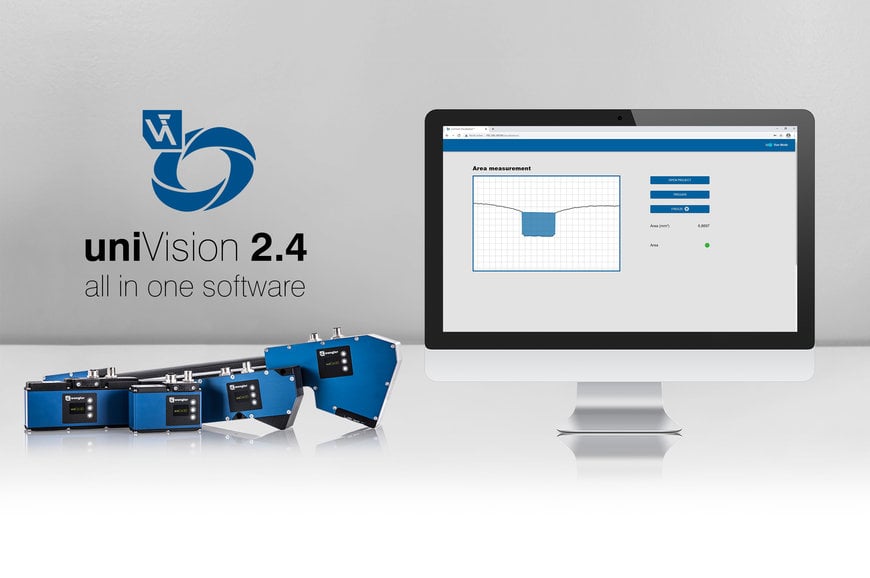uniVision 2.4 Image Processing Platform: Update Makes 2D/3D Profile Sensors Smart
The latest release of the modular uniVision image processing software has it all: While in the past an external analysis module always had to be used to evaluate 2D/3D profile recordings, the smart 2D/3D profile sensors now combine sensor and analysis module directly in the compact housing thanks to uniVision 2.4.

New overlays also provide even more user comfort and high-resolution digital cameras with 12 MP offer an even greater choice in the configuration of vision systems.
All the 80 models in the weCat3D series can now also be used as a smart version, with no external analysis module (IPC) required. Both the profile recording and evaluation then take place directly in the sensor housing. The smart 2D/3D profile sensors show their full strength in particular in plants where space is at a premium. “At the same time, the quality of the profile data generated in the smart sensor remains the same. This new version, which is available with a software license update, is therefore ideal for
applications with lower scan rates of up to 50 Hz, for example for angle measurement, but also for high profile quality requirements where highly reflective surfaces such as metals need to be reliably detected,” explains wenglor Product Manager, Martin Knittel.
“Customers also save the cost of expensive IPCs for applications that do not require high IPC performance. For applications with high performance requirements, the solution with a separate control unit (IPC) is of course still available, offering maximum flexibility and easy interchangeability.”
More Visualization Options for Greater Convenience
The web-based visualization of the results will now include additional overlays in images and height profiles as part of the uniVision 2.4 release. With overlays such as boxes, cross-sectional areas, rectangles, polygons or images, results such as scanned codes, blobs or threshold images can be displayed directly in the image or profile. Additional texts such as code content, intersection point or angle information can be assigned to the overlays. Static images (e.g. logos) and OK/NOK images can also be displayed.
New Digital Cameras With Higher Resolutions
In addition to the existing digital cameras with a resolution of either 1.6 or 5 MP, there are now also high-resolution cameras available with 12 MP. Compatible with the C mount threaded connection, the new models are also available in either a color variant (color) or in a black-and-white version (monochrome). “The advantage of these digital cameras is that the very compact design offers a complete range of resolutions from 1.6 to 12 MP – but is used for the same mounting and connection technology,” says Knittel. “The high-resolution 12 MP cameras also display more details with the same visual field and the same focal distance.” There are a total of seven C mount lenses with fixed focal distances between 6 and 50 mm as suitable accessories for these cameras.
Control Examples and Output Hold Time Make Operation Easier
To make it easier to integrate all uniVision products into external control systems, sample programs will be available in future. There are examples for the Siemens’ TIA portal, Rockwell’s Studio 5000 Logix Designer, Beckhoff’s TwinCAT 3 and Omron’s Sysmac Studio, for example. The examples show integration via various standard interfaces such as PROFINET, EtherNet/IP, TCP/IP or UDP. For all digital outputs of the control unit, it is also possible to easily detect whether new results are available via the output hold time.
The Highlights at a Glance
- Smart 2D/3D profile sensor: Profile recording and evaluation directly in the sensor without additional IPC
- VisionSystem2D: New digital cameras with resolutions of 12 MP ensure high-quality images
- Expansion of visualization: New overlays in the image and profile as well as static images
- Examples of easier integration into control systems via various interfaces
- Digital outputs on the control unit: Output hold time for easy checking of results

